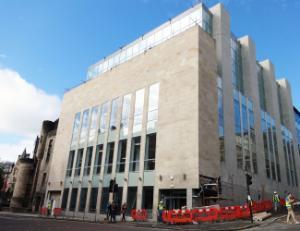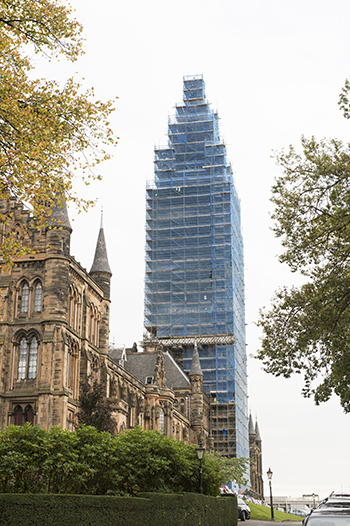Campus redevelopment update
Published: 27 October 2015
An update from Ann Allen, the University's Director of Estates and Buildings, aimed at briefing you on the progress being made towards creating a World Changing Campus.
This is the fourth in a series of updates from Ann Allen, the University's Director of Estates and Buildings, aimed at briefing you on the progress being made towards creating a World Changing Campus.
Purpose
The University is in the midst of an incredibly large project to transform the campus as part of a £775M development plan.
Work is progressing well on all the projects that make up the campus development plan and it is important to remind ourselves why we are undertaking such a large scale project; our overarching purpose is to create a world changing campus for all our inspirational people.
Creating a world changing campus is more than just a tagline. The research, teaching and students that come from the University have played a hugely important role in the city of Glasgow and the wider world for more than 500 years. We are building a campus that will support the fantastic work here for years to come.
There are many aspects we are considering to ensure that the campus fulfils the needs of everyone today and in the future. The Estates and Buildings team are considering the best ways to make the new buildings both effective and efficient.
We are focused on building accommodation that enhances the student experience.
 To name just a few of our projects aimed at creating an unrivalled student experience at the University of Glasgow: The Hive which opened last weekend, the Stevenson extension which will open in the next few days; the library is undergoing extensive refurbishment; the GLass building at Garscube which will open next term and of course the new teaching facility at the Queen Elizabeth Hospital.
To name just a few of our projects aimed at creating an unrivalled student experience at the University of Glasgow: The Hive which opened last weekend, the Stevenson extension which will open in the next few days; the library is undergoing extensive refurbishment; the GLass building at Garscube which will open next term and of course the new teaching facility at the Queen Elizabeth Hospital.
In the last three years the University has spent over £42.2 million on improving student facilities.
We are not only interested in the buildings but also the landscape and environment of the campus. Our team of groundskeepers ensure the outdoor areas are immaculate even with construction work taking place. When planning new buildings we always consider the space around them as well as the interior.
Saving the Tower

Due to the Scottish climate the stone on the tower deteriorated and essential repairs were needed.
The University Tower is an iconic landmark in Glasgow and our new blue tower will be a landmark until Spring next year.
We are spending time and energy to make sure both the tower and bell are restored to ensure it remains a landmark in the future. It is our duty as guardians of this vast estate to continue to maintain and repair our buildings. Built into the capital plan there is a commitment of funding to continue to maintain our buildings – old and new.
Learning from the past, looking to the future
After the University moved from its original site on Glasgow’s high street in 1870 a newly built campus was designed by Sir George Gilbert Scott and the largest of these new buildings was the bell tower.
The tower’s signature spire was designed by Sir George's son, John Oldrid Scott, and was added to the building in 1887. This design by John Oldrid was slightly different to the original plans. This design allows wind to pass through the tower to minimise the damage caused by the weather.
Had the original, more solid design, been used the tower would have been damaged by weather to a much greater extent that it has.
We continue to use this forward thinking to ‘future proof’ our new buildings. Our estate will be iconic but will also reflect the climate and be fit for purpose.
Quick facts about the tower repairs
|
Testing for the future
The new projects will not only provide new buildings but will also allow the University to introduce new ways of working both in terms of pedagoy and how we provide service for students.
We are using the current investment projects to test new ways of working. The most recent lecture theatre refurbishments have been designed to encourage group working even in the lecture theatre environment. The refurbishment of the library will allow us to trial different ways of providing services to users.
The move to Tay House for some services staff is allowing us to test multiple designs for office layouts and ways of works.
We will continue to test ‘future proof ideas to understand the best way of creating a campus that is efficient as well as effective and fit for all our inspiring people for generations.
First published: 27 October 2015
<< October

